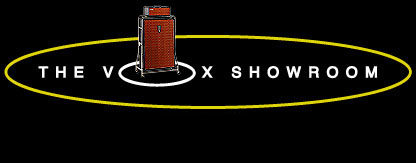manufacturing facilities that had formerly produced the R-M range of Vox amplifiers. Production of the AC30TB and AC30TBX was moved to Marshall Amplification plc under subcontract to Korg.
After Korg retired the AC30TB and TBX models in 2004, production of all Vox tube amps was moved from Marshall to the International Audio Group of Shenzhen, China, ending the forty-four year British manufacturing heritage of the AC-30.
1994 Vox AC30TBX vs the 1965 JMI AC-30 Top Boost Amplifier
When designing the AC30TBX, the engineers at Korg in Japan were determined to build an amp that would duplicate the original JMI Vox AC-30 Top Boost circuitry. Aside from a few minor circuit changes to the power supply made necessary by modern UL and CE electrical safety regulations, the AC-30TB and TBX came closest of all the post Jennings AC-30 reissues to recreating the circuitry of the original JMI Vox AC-30.
Chassis
The AC30TB and AC30TBX utilized a rectangular anodized steel chassis that mounted to the sides of the amplifier cabinet with four large philips flat head screws. The wooden upper back panel of the cabinet mounted directly to the chassis.
The power transformer, choke and output transformer plus the output and rectifier tube sockets were mounted to the outside of the chassis.
Some prior AC-30 models located the output tubes directly on the main PC board. The heat generated by these tubes sometimes caused the main circuit board to warp, at times leadiing to premature electronic failure. The design of the AC30TB and TBX eliminated this problem and enabled the chassis to serve as a heat sink for the output and rectifier tubes.
The sockets for the preamp tubes were mounted to the main circuit board. These tubes protruded through six holes in the chassis for ventilation. A rubber gasket was installed on each chassis hole to protect the glass envelope of the tube from damage.
Circuit Board Design
A single printed circuit board (PCB) housed the circuitry for the Normal, Brilliant, and Vibrato channels along with the preamp tube sockets. The electrical components were surface soldered to circuit traces on the top side of the board. This eliminated the need to access the back side of the PCB for servicing the amp.
Connections for the preamp tube filament heaters were hand wired to the power supply with red and black wires looping from one preamp tube socket to the next. Connections to the chassis mounted EL84 output and GZ34 rectifier tubes were hand wired from the PCB as well.
Power Supply
GZ34 Recifier - Vox AC-30 amps produced in the 70s, 80s and early 90s used a quartet of diodes in the power supply for DC rectification. These diodes replaced the GZ34 rectifier tube originally designed into the Jennings Vox AC-30 power supply.
While diodes were highly efficient and inexpensive, many players felt that diode rectified AC-30 amps lacked the natural audio compression and warmth of their tube rectified JMI counterparts. The harder the tube rectified amp was played, the greater the voltage sag from the rectifier tube and as a result, the greater the audio compression.
After more than a twenty year absence, the Korg AC30TB and AC-30TBX brought back the GZ34 tube rectifier from the original Jennings AC-30 circuit.
 |
Voltage Selection - By the time the AC30TB and TBX were brought to market, electrical safety codes had banned the use of external AC or "mains" voltage selectors. The AC30TB or AC30TBX amp could be internally configured to accept either a 120 or 240 VAC by changing a jumper lead on the power transformer. See diagram at left.
Fuses - The AC30TB and AC30TBX each had five fuses. The main fuse, F5, was designed to be consumer replaceable and was located on the bottom of the chassis. The 120 VAC version of the amp specified a T4A fuse, the 240 volt version required a T2A.
The four additional fuses were located on the PCB. F1 was a 2A fuse inline with the GZ34 heater filaments. F2 was a T500ma fuse in the B+ voltage supply. F3 and F4 were 3A fuses located in 6.3V heater line for the preamp and power tubes.
|
Standby Switch - AC-30 amplifiers produced in the 1960's by JMI did not include a standby switch. Most of the 1980's era Vox AC-30 amps manufactured by Rose Morris amps had a standby switch, as did the AC30TB and TBX.
A standby switch controls the B+ voltage circuit. Tube life is shortened when the full B+ voltage is presented to a cold tube. When in the "Standby" position, the switch allows the filament heaters to warm the preamp and power tubes prior to introducing the B+ voltage.
A power supply with a tube rectifier can replace the time delay function of a standby switch. Tube rectifiers require about 20 seconds to warm up prior to supplying B+ operating voltages to the other tubes.
Diode rectified AC-30 amps, such as those from Rose Morris, incorporated a standby switch as diodes eliminate the natural warm-up delay of a tube rectifier.
 |
Foot Switch
Korg recreated the sand cast aluminum single button "egg" foot switch for the AC-30TB and TBX. Like the original JMI pedal, a ribbed rubber tread covered the bottom of the switch.
North Coast Music bought the sand cast mold for
|
 |









